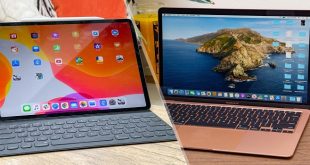The operating systems, hardware, and ecosystem of an Android and iPhone mobile device are their primary distinctions. Here are a few central issues to consider:
Working Framework: iPhones run on Apple’s exclusive working framework called iOS, while Android cell phones utilize the Android working framework created by Google. Each working framework has its own UI, highlights, and application biological system.

Hardware: iPhones are solely produced by Apple, and that implies they control both the product and equipment parts of their gadgets. In contrast, Android is an open-source operating system that is utilized by a variety of manufacturers, including Samsung, Google, LG, and others. This outcomes in a wide assortment of Android gadgets with various equipment determinations and plans.
UI: iOS and Android have particular UIs. iOS typically provides a more streamlined and consistent experience across iPhone models. Android gives greater adaptability and customization choices, permitting clients to customize their gadget’s appearance and conduct positively.
Ecosystem of Apps: The application stores for iOS and Android vary. The Apple Application Store is organized and firmly constrained by Apple, guaranteeing a by and large exclusive expectation of application quality and security. Due to its open nature, the Google Play Store for Android has a wider selection of apps, but its quality may be more varied.
Connectivity to Other Devices: Because Apple places a strong emphasis on product interoperability, an iPhone can facilitate a seamless experience when used in conjunction with other Apple products, such as a MacBook or Apple Watch. Android gadgets can coordinate with different stages too, however the degree of combination might change relying upon the particular gadget and biological system.
Updates: Apple commonly delivers iOS refreshes for a more extended period contrasted with Android gadgets. This implies that more seasoned iPhones frequently get programming refreshes for a more drawn out time frame, while Android gadgets might have a more limited programming support life expectancy.
Pricing: iPhones will quite often be more costly contrasted with numerous Android gadgets. Apple positions itself as a top notch brand, while Android offers a more extensive scope of gadgets at different price tags, including spending plan well disposed choices.
In the end, which mobile device to choose—an iPhone or an Android—depends on personal preferences, budget, desired features, and ecosystem preferences.
About Iphone Software
The product on iPhones is called iOS (iPhone Working Framework). Here are a few central issues about iPhone programming:
Ecosystem Closed: Apple developed and oversees iOS, a closed ecosystem. This implies that Apple has full command over the equipment, programming, and application conveyance for iPhones. They firmly coordinate their product with their equipment, which considers a more smoothed out and streamlined client experience.
UI: iOS offers a spotless and natural UI described by a matrix of symbols on the home screen. It involves motions for route, for example, swiping, tapping, and squeezing. The UI is intended to be easy to understand and available, in any event, for those new to cell phones.
Application Store: The Application Store is the authority commercial center for iOS applications. It offers a tremendous determination of applications, including games, efficiency devices, web-based entertainment stages, and then some. The Application Store adheres to severe rules and audit cycles to guarantee application quality, security, and similarity with iOS gadgets.
Updates: Apple gives normal programming updates to iOS to improve execution, present new highlights, and address security weaknesses. iOS updates are typically available for a wide variety of iPhone models, allowing users to take advantage of the most recent enhancements and security updates.
Protection and Security: In its iOS ecosystem, Apple places an emphasis on privacy and security. End-to-end encryption, App Store vetting, and privacy-focused features like App Tracking Transparency are just a few of the ways they safeguard user data and enhance privacy.
Incorporation with Other Apple Gadgets: iOS enables seamless integration and synchronization across all of your Apple devices, including the MacBook, iPad, and Apple Watch. Highlights like Handoff, Progression, and iCloud empower you to switch between gadgets easily and access your information across numerous stages.
Siri: Siri is Apple’s voice-controlled menial helper. It is part of iOS and has features like controlling devices with voice commands, answering questions, setting reminders, and more.
Accessibility: iOS incorporates an extensive variety of openness elements to help clients with handicaps. iOS devices are made more inclusive and accessible to a wider range of users thanks to these features, which include options for people with vision, hearing, physical and motor skills, and cognitive disabilities.
It’s actually quite important that the particular elements and abilities of iOS might change relying upon the variant of iOS introduced on the gadget and the model of iPhone being utilized. With each major iOS update, Apple frequently introduces new features and enhancements.


